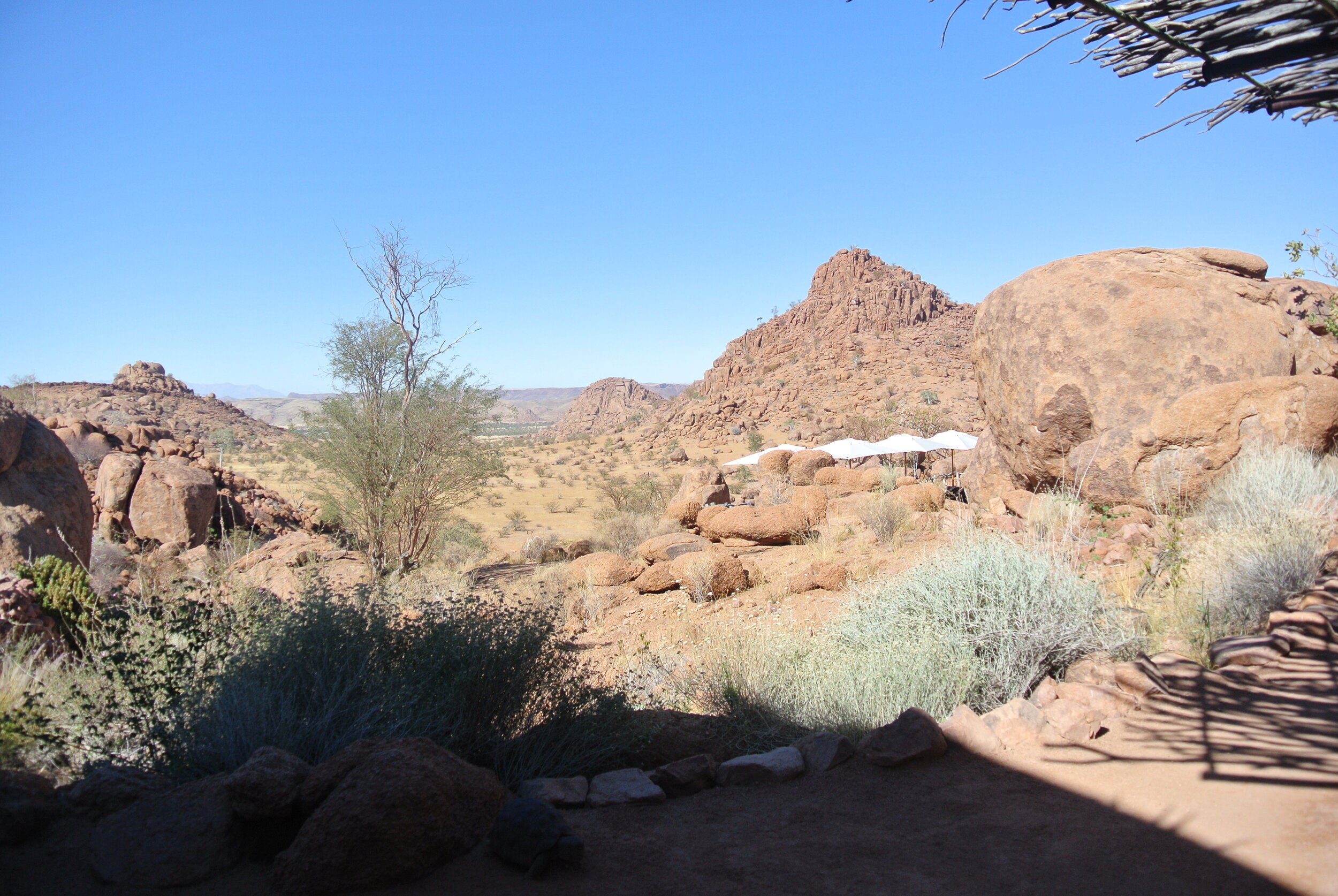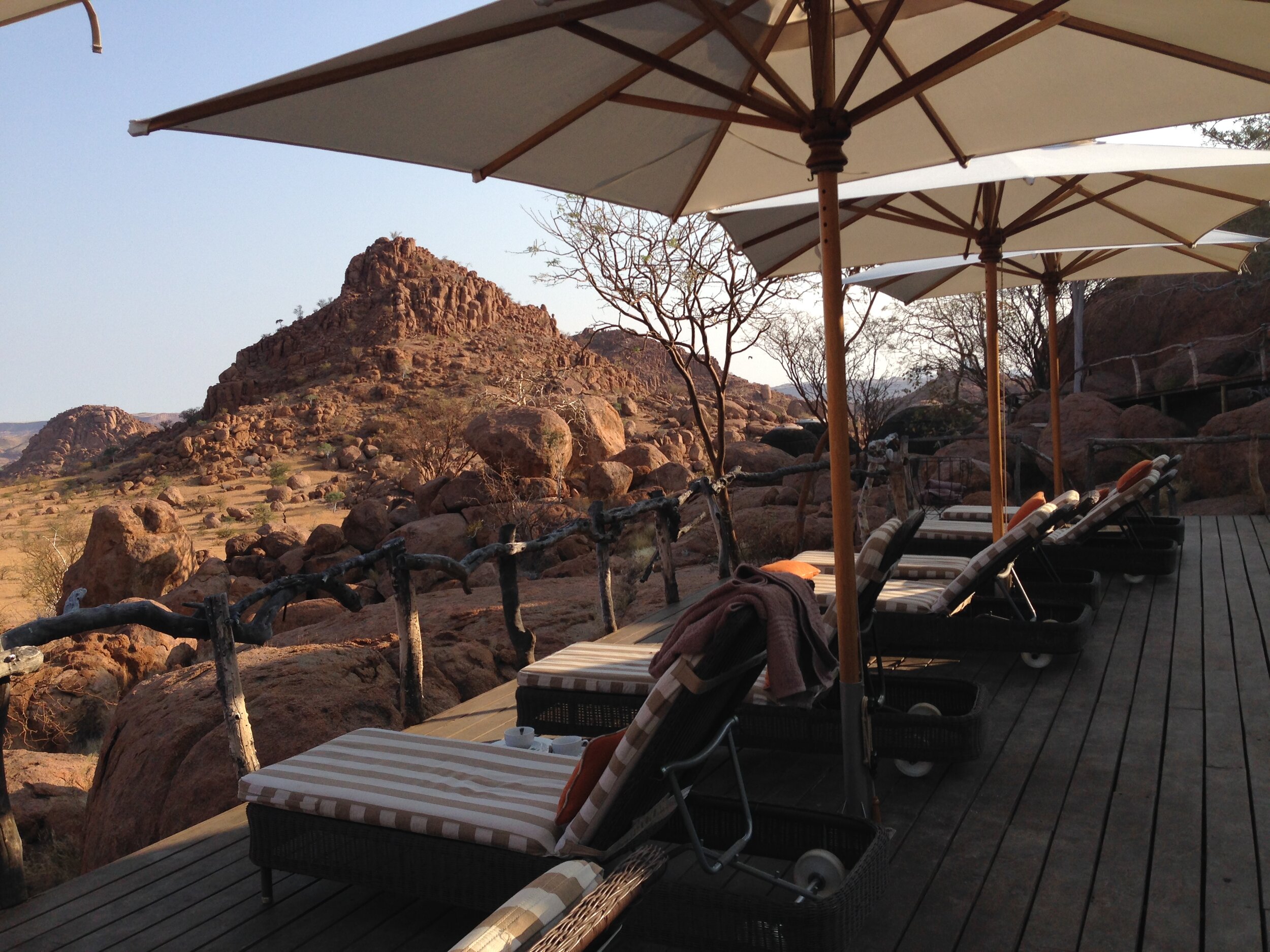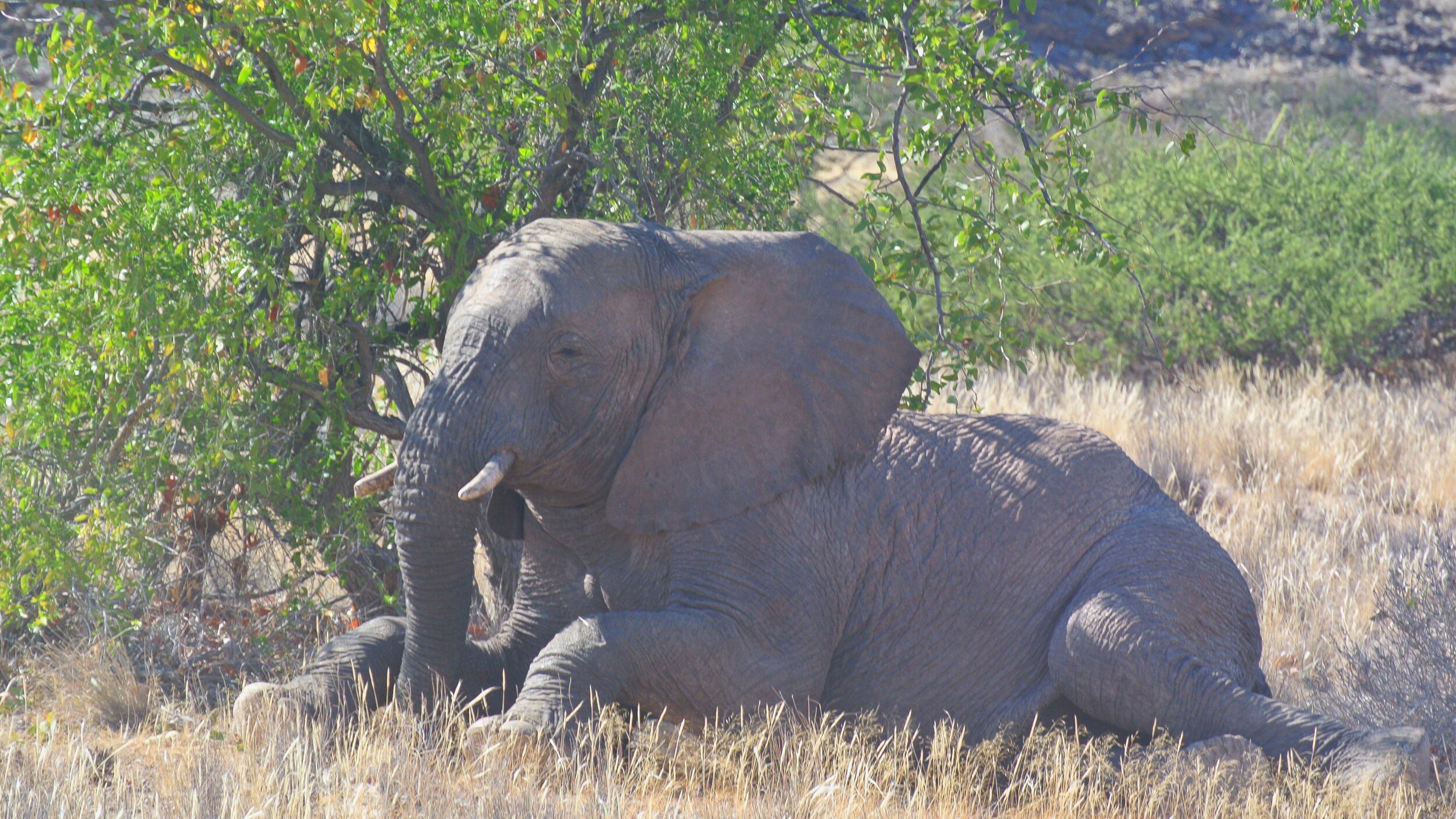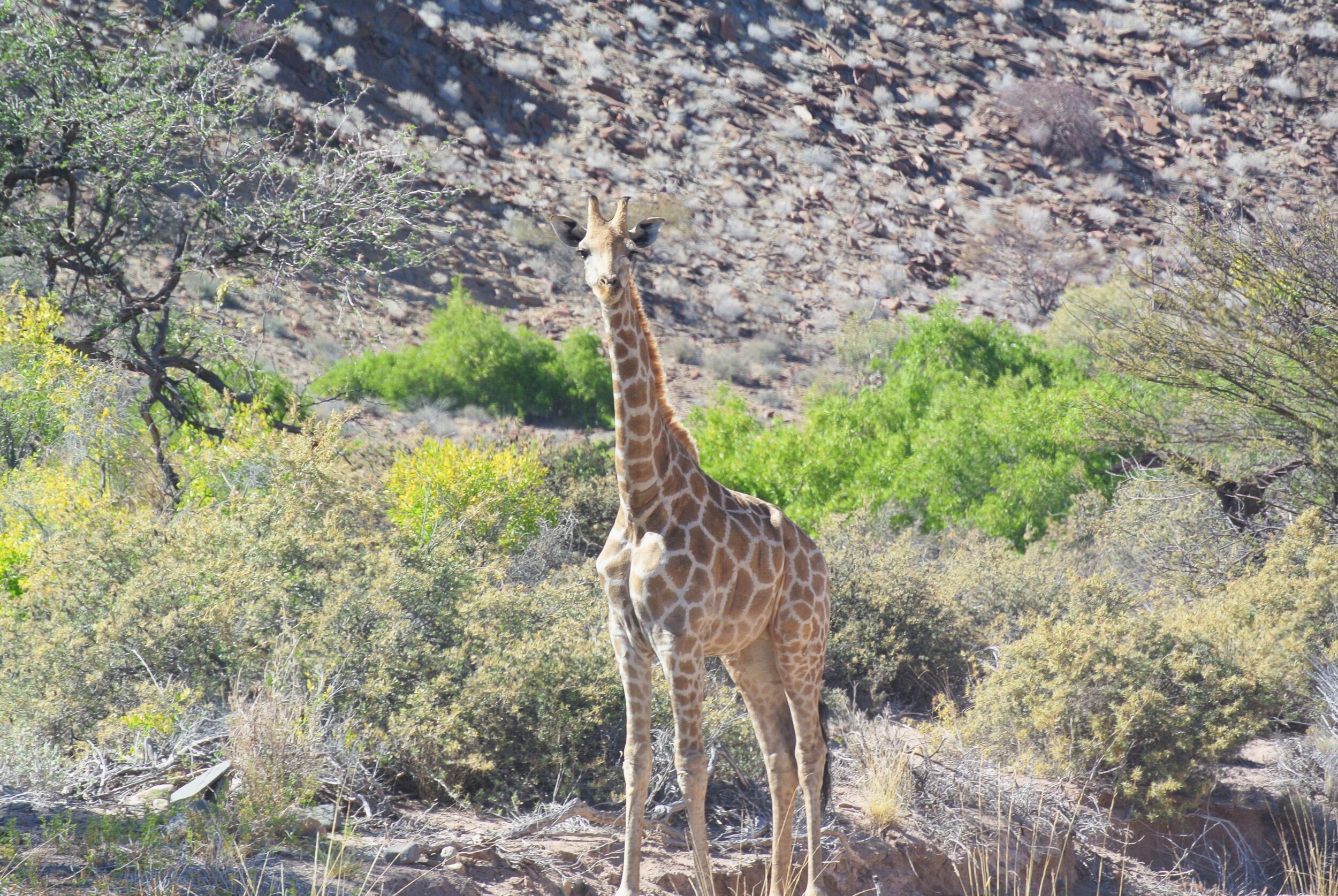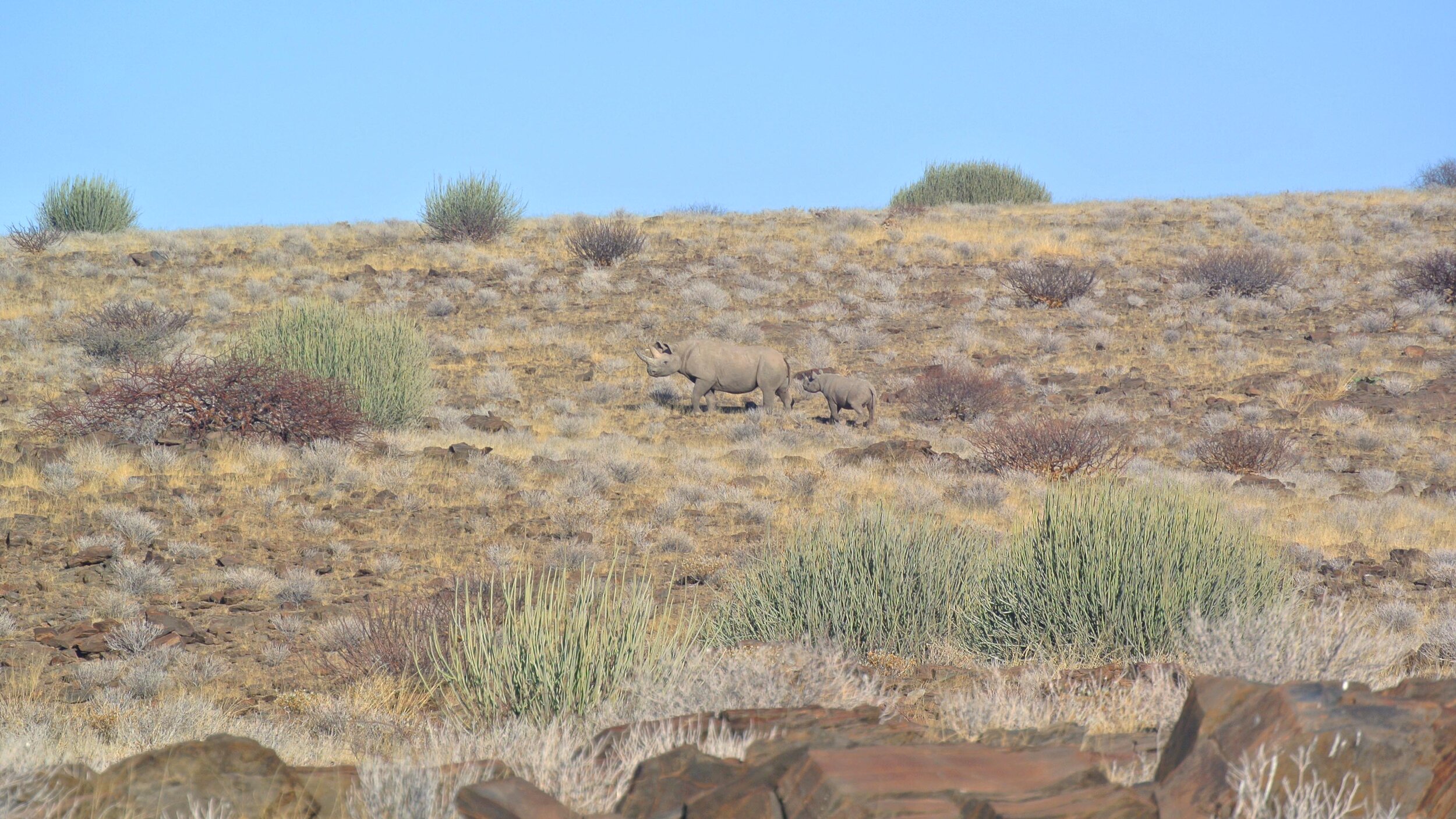TRAVEL | EXPLORING DAMARALAND, NAMIBIA
Scrolling i-escape many years ago, a cabin in a lunar landscape caught my eye and this quaint cabin was in remotest Namibia. It was then added to the destination list.
In complete contrast to our usual city life, escaping to Namibia’s peaceful and remote wilderness with only the diverse and stunning landscapes for a company was a reason in itself with the wildlife being an added bonus.
A highlight of our Namibian adventure was staying at Mowani Mountain Camp, a scenic camp nestled between boulders and desert in deepest Darmaraland, home to desert elephants and the black rhino.
Tucked away between boulders, lies the thatched roof dome bedrooms, the reception and dining room which are built into the landscape and don’t detract from its beauty. Although there are other guests, not only the scenery but the staff afford you privacy and it feels like you have this little haven of paradise to yourself.
As honeymooners, they made it extra special with champagne sitting on our terrace and a candle lit dinner under the glittering Namibian stars made for an unforgettable evening.
Perched on top is their bar where sun downers, accompanied by breathtaking sunsets are served. The swimming pool and decking area are also surrounded by the vast unspoilt wilderness. It is pure escapism.
Staying at the camp was a picturesque introduction alone to Damaraland’s beauty and the camp is perfectly situated for visiting Twyfelfontein, a site of ancient bushmen engravings and the desert elephants.
After an afternoon enjoying the camp, we were ready for our first safari. Rising before the sun, we wrapped up warm for the long drive to the heart of Daramaland to track desert elephants and black rhino.
We traversed rugged desert plains taking in the incredible scenery with the occasional grazing gazelle and lone ostrich silhouetted against the volcano—esque mountains. After a pit stop, we meandered through the plains and rocky granite formations before turning into a secret oasis enclave where the elephant herd was resting under thorny acacia trees.
Namibia’s desert elephants are one of only two known populations of desert-dwelling elephants in the world and they are well adapted to its harsh environment. They walk huge distances covering up to 70km a day in search of water and food.
Our herd varied in age with the young, curious by nature playfully coming close to the jeep and the older elephants happily resting and undisturbed by our company. Usually you see a herd of standing elephant but for the first time, we saw elephants lieing fully down.
Continuing our journey to find the rhino, we climbed up craggy passages, passing by curious giraffes surprised by our presence before heading back to the mountainous highlands. With sparse vegetation, you would think it would be easy to find them but being well camouflaged, combined with their excellent hearing didn’t make it easy.
Tellingly, due to the prevalence of poaching in Namibia, we were not told how many could be in the area by the park’s ranger. Since our 2014 visit, Namibia’s anti-poaching efforts are paying off with a 60% decrease in poaching this year.
After driving for hours, and almost giving up hope, the ranger spotted movement in the distance. Engine off, we kept a vigilant lookout and there she was, the black rhino with her calf walking into full view. Unsurprisingly, rhinos are wary of humans and she kept her distance. We got out of the jeep to get a closer encounter. They were at least 100m away but with the sparse landscape now playing to our hand, we were able to get a decent view of them walking across the terrain. Thankfully, our guide also had a good camera to get the close up shot.
We were thankful to have this experience to ourselves; something you remember for life and the ranger was grateful to see a calf and mother, in the hope that the dwindling rhino numbers will be reversing in Namibia.


